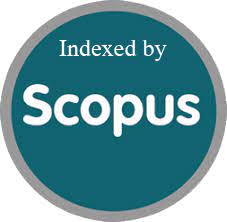Viral Infections in the Modern Era: Advances in Medical Microbiology and Diagnostic Approaches
DOI:
https://doi.org/10.52783/jns.v14.3659Keywords:
Viral diagnostics, Molecular techniques, Point-of-care testing, CRISPR, Digital healthAbstract
Viral infections continue to pose significant global health challenges, necessitating rapid and accurate diagnostic approaches. This review explores the evolution of viral diagnostics, from early culture-based techniques to modern molecular tools such as PCR, isothermal amplification, and CRISPR-based assays. It also highlights advancements in immunological methods, biosensors, and non-invasive testing. The integration of artificial intelligence, nanotechnology, and digital health platforms has further revolutionized point-of-care testing and outbreak surveillance. While these innovations enhance diagnostic capabilities, issues like scalability, cost, and adaptability to viral mutations remain. Addressing these challenges is crucial for developing effective, accessible, and resilient diagnostic systems. Emerging technologies promise to bridge diagnostic gaps, especially in low-resource settings. A multidisciplinary approach will be key to driving future innovation and preparedness against viral threats.
Downloads
Metrics
References
Dronina J, Samukaite-Bubniene U, Ramanavicius A. Advances and insights in the diagnosis of viral infections. J Nanobiotechnol. 2021;19:348. doi: 10.1186/s12951-021-01081-2.
Gradisteanu Pircalabioru G, Iliescu FS, Mihaescu G, Cucu AI, Ionescu ON, Popescu M, et al. Advances in the rapid diagnostic of viral respiratory tract infections. Front Cell Infect Microbiol. 2022;12:807253. doi: 10.3389/fcimb.2022.807253. PMID: 35252028; PMCID: PMC8895598.
Borkakoty B, Jakharia A, Singh P, Ahmed Khan S. Trends of diagnostic methods for human viral diseases. Infect Dis. IntechOpen; 2024. Available from: http://dx.doi.org/10.5772/intechopen.113239.
Altindiş M, Kahraman Kilbaş EP. Managing viral emerging infectious diseases via current and future molecular diagnostics. Diagnostics. 2023;13(8):1421. doi: 10.3390/diagnostics13081421.
Afroj S, Britnell L, Hasan T, Andreeva DV, Novoselov KS, Karim N. Graphene-based technologies for tackling COVID-19 and future pandemics. Adv Funct Mater. 2021;31:2107407. doi: 10.1002/adfm.202107407.
Ahmadivand A, Gerislioglu B, Ramezani Z, Kaushik A, Manickam P, Ghoreishi SA. Functionalized terahertz plasmonic metasensors: femtomolar-level detection of SARS-CoV-2 spike proteins. Biosens Bioelectron. 2021;177:112971. doi: 10.1016/j.bios.2021.112971.
Andreini P, Bonechi S, Bianchini M, Mecocci A, Scarselli F. A deep learning approach to bacterial colony segmentation. In: International Conference on Artificial Neural Networks; 2018; Rhodes, Greece: Springer.
Anema A, Kluberg S, Wilson K, Hogg RS, Khan K, Hay SI, et al. Digital surveillance for enhanced detection and response to outbreaks. Lancet Infect Dis. 2014;14(11):1035–1037. doi: 10.1016/S1473-3099(14)70953-3.
Anik Ü. Electrochemical medical biosensors for POC applications. In: Medical Biosensors for Point of Care (POC) Applications. Sawston, United Kingdom: Woodhead Publishing; 2017. p. 275–292. doi: 10.1016/B978-0-08-100072-4.00012-5.
Azzi L, Carcano G, Gianfagna F, Grossi P, Dalla Gasperina D, Genoni A, et al. Saliva is a reliable tool to detect SARS-CoV-2. J Infect. 2020;81(1):e45–e50. doi: 10.1016/j.jinf.2020.04.005.
Babiker A, Immergluck SK, Stampfer D, Rao A, Bassit L, Su M, et al. Single-amplicon, multiplex real-time RT-PCR with tiled probes to detect SARS-CoV-2 spike mutations associated with variants of concern. J Clin Microbiol. 2021;59(12):01446–01421. doi: 10.1128/jcm.01446-21.
Baghizadeh Fini M. Oral saliva and COVID-19. Oral Oncol. 2020;108:104821. doi: 10.1016/j.oraloncology.2020.104821.
Basile K, Kok J, Dwyer DE. Point-of-care diagnostics for respiratory viral infections. Expert Rev Mol Diagn. 2018;18(1):75–83. doi: 10.1080/14737159.2018.1419065.
Bharadwaj HK, Agarwal A, Chamola V, Lakkaniga NR, Hassija V, Guizani M. A review on the role of machine learning in enabling IoT based healthcare applications. IEEE Access. 2021;9:38859–38890. doi: 10.1109/ACCESS.2021.3059858.
Bramhachari PV, Mohana Sheela G, Prathyusha AMVN, Madhavi M, Satish Kumar K, Reddy NNR, et al. Advanced immunotechnological methods for detection and diagnosis of viral infections: Current applications and future challenges. Dynamics of Immune Activation in Viral Diseases. 2019;5:261–275.
Reta DH, Tessema TS, Ashenef AS, Desta AF, Labisso WL, Gizaw ST, et al. Molecular and immunological diagnostic techniques of medical viruses. Int J Microbiol. 2020;2020:8832728.
Ratcliff RM, Chang G, Kok T, Sloots TP. Molecular diagnosis of medical viruses. Curr Issues Mol Biol. 2007;9:87–102.
Burbelo PD, Iadarola MJ, Chaturvedi A. Emerging technologies for the detection of viral infections. Future Virol. 2018;14(1):39–49. doi: 10.2217/fvl-2018-0145.
Alamri AM, Alkhilaiwi FA, Ullah Khan N. Era of molecular diagnostics techniques before and after the COVID-19 pandemic. Curr Issues Mol Biol. 2022;44:4769–4789.
Pretorius M, Venter M. Diagnosis of viral infections. Viral Infections in Children. 2017;1:151–182.
Souf S. Recent advances in diagnostic testing for viral infections. Bioscience Horizon. 2016;9:hzw010.
Sciuto EL, Leonardi AA, Calabrese G, Luca GD, Coniglio MA, Irrera A, Conoci S. Nucleic acids analytical methods for viral infection diagnosis, state-of-the-art and future perspectives. Biomolecules. 2021;11:1585.
Navarro E, Serrano-Heras G, Castaño MJ, Solera J. Real-time PCR detection chemistry. Clin Chim Acta. 2015;439:231–250.
Clark KD, Zhang C, Anderson JL. Sample preparation for bioanalytical and pharmaceutical analysis. Anal Chem. 2016;88:11262–11270.
Downloads
Published
How to Cite
Issue
Section
License

This work is licensed under a Creative Commons Attribution 4.0 International License.
You are free to:
- Share — copy and redistribute the material in any medium or format
- Adapt — remix, transform, and build upon the material for any purpose, even commercially.
Terms:
- Attribution — You must give appropriate credit, provide a link to the license, and indicate if changes were made. You may do so in any reasonable manner, but not in any way that suggests the licensor endorses you or your use.
- No additional restrictions — You may not apply legal terms or technological measures that legally restrict others from doing anything the license permits.










